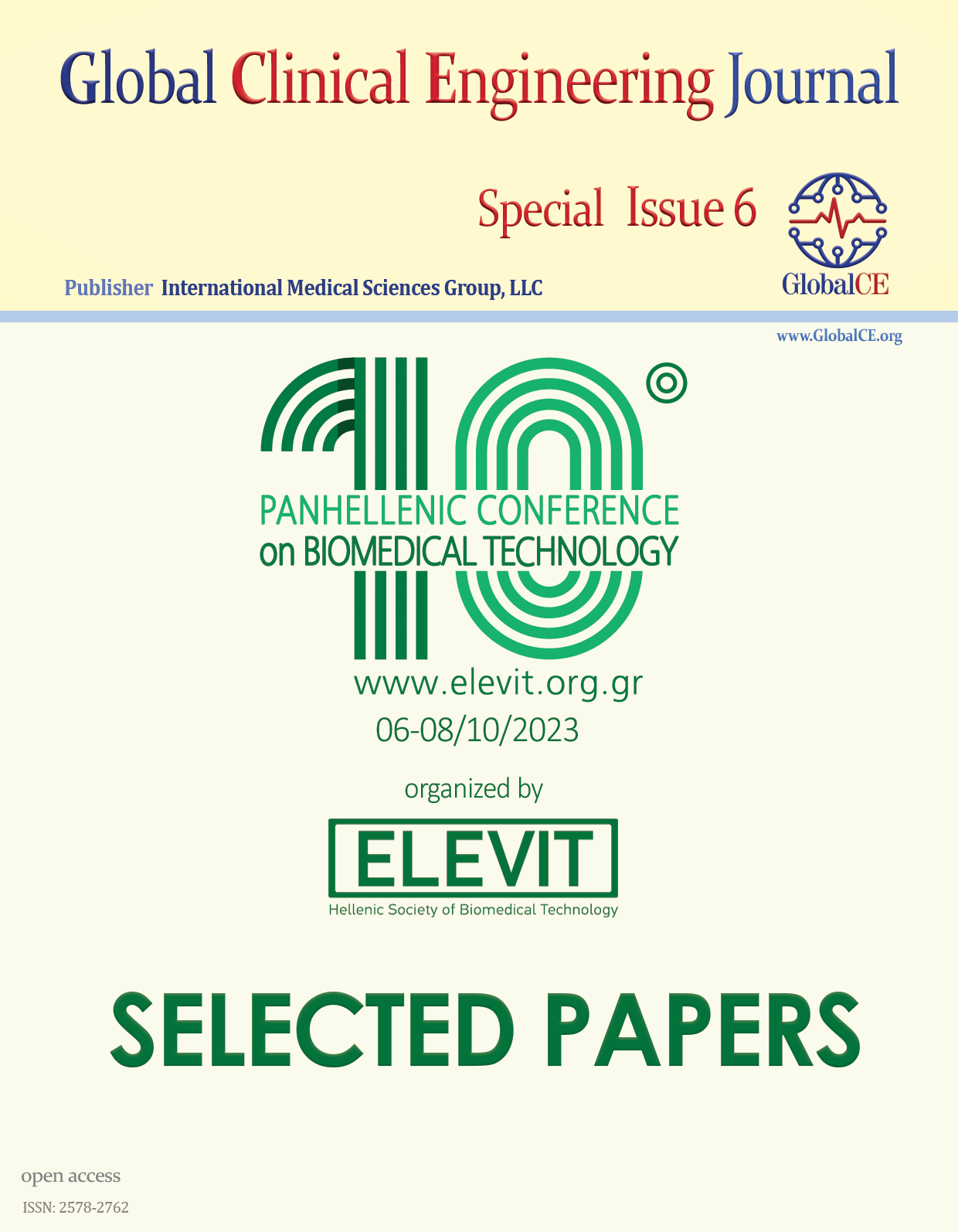Deciphering Astroglial Dynamics and Interactions Through Multi-Scale Computational Modeling in Multiple Sclerosis Evolution
Main Article Content
Keywords
Astrocytes, Conduction Velocity, In-Silico, Multiple Sclerosis
Abstract
Multiple sclerosis (MS) is a neurodegenerative disease affecting millions worldwide, highlighting the complex relationship between the immune system and the central nervous system. Astrocytes are recognized as significant contributors to the disease's pathogenesis. In this work, a biophysically realistic astrocytic model was created to investigate astrocytes' role in MS development, focusing on their impact on axonal conduction and enhanced sodium channel facilitation in demyelinated axons. Through the advancement of comprehension about the involvement of astrocytes in the pathophysiology of MS, this study explores the processes underlying the disease. The study also examines the morphology of astrocytes and its influence on cellular activity, providing insights into cell instability drivers and the interaction between morphological changes and functional modifications. This approach aims to understand the complex connections between cellular characteristics and physiological attributes, enhancing our understanding of multiple sclerosis and potentially developing groundbreaking therapies.
Downloads
Abstract 325 | PDF Downloads 40
References
2. Ponath, G., Park, C. and Pitt, D. The Role of Astrocytes in Multiple Sclerosis. Front. Immunol 2018; 9:217. Doi: 10.3389/fimmu.2018.00217.
3. Henstridge, C.M., Tzioras, M. and Paolicelli, R.C. Glial Contribution to Excitatory and Inhibitory Synapse Loss in Neurodegeneration. Front. Cell. Neurosci 2019; 13(63). Doi: 10.3389/fncel.2019.00063.
4. Carlos, R., Gustavo, S., Gaston, K., et al. Brain atrophy in Multiple Sclerosis. Am J Psychiatry Neurosci 2015; 3(3), 40–49. Doi: https://doi.org/10.11648/j.ajpn.20150303.11.
5. Correale, J., and Farez, M.F. The Role of Astrocytes in Multiple Sclerosis Progression. Front. Neurol 2015; 6(180). Doi: 10.3389/fneur.2015.00180.
6. Wheeler, M.A. and Quintana, F.J. Regulation of Astrocyte Functions in Multiple Sclerosis. Cold Spring Harb Perspect Med 2019; 9(1):a029009. Doi: 10.1101/cshperspect.a029009.
7. Savtchenko, L.P., Bard, L., Jensen, T.P., et al. Disentangling astroglial physiology with a realistic cell model in silico. Nat Commun 2018; 9(1):3554. Doi: 10.1038/s41467-018-05896-w. Erratum in: Nat Commun 2019; 10(1):5062. Doi: 10.1038/s41467-019-12712-6.
8. Batiuk, M.Y., Martirosyan, A., Wahis, J., et al. Identification of region-specific astrocyte subtypes at single cell resolution. Nat Commun 2020; 11(1):1220. Doi: 10.1038/s41467-019-14198-8.
9. Rusakov, D.A., Bard, L., Stewart, M.G., et al. Diversity of astroglial functions alludes to subcellular specialisation. Trends Neurosci 2014; 37(4):228-42. Doi: 10.1016/j.tins.2014.02.008.
10. Savtchenko, L.P. and Rusakov, D.A. Regulation of rhythm genesis by volume-limited, astroglia-like signals in neural networks. Philos Trans R Soc Lond B Biol Sci 2014; 369(1654):20130614. Doi: 10.1098/rstb.2013.0614.
11. Schiweck., J., Eickholt, B.J., Murk, K. Important Shapeshifter: Mechanisms Allowing Astrocytes to Respond to the Changing Nervous System During Development, Injury and Disease. Front Cell Neurosci 2018; 12(261). Doi: 10.3389/fncel.2018.00261.
12. Zhou, B., Zuo, Y.X., Jiang, R.T. Astrocyte morphology: Diversity, plasticity, and role in neurological diseases. CNS Neurosci Ther 2019; 25(6):665–673. Doi: 10.1111/cns.13123.
13. Clavreul, S., Abdeladim, L., Hernández-Garzón, E., et al. Cortical astrocytes develop in a plastic manner at both clonal and cellular levels. Nat Commun 2019; 10(1):4884. Doi: 10.1038/s41467-019-12791-5.
14. Fleidervish, I., Lasser-Ross, N., Gutnick, M., et al. Na+ imaging reveals little difference in action potential–evoked Na+ influx between axon and soma. Nat Neurosci 2010; 13(7), 852–860. Doi: https://doi.org/10.1038/nn.2574.
15. Hines, M. and Shrager, P. A computational test of the requirements for conduction in demyelinated axons. Restor Neurol Neurosci 1991; 3(2):81–93. doi: 10.3233/RNN-1991-3205.
16. Carnevale, N.T. and Hines, M.L. The NEURON Book; Cambridge UP: Cambridge, UK; 2006.
17. Furchtgott, L.A., Chow, C.C., Periwal, V. A Model of Liver Regeneration. Biophys. J 2009; 96(10): 3926–3935. Doi: https://doi.org/10.1016/j.bpj.2009.01.061.






